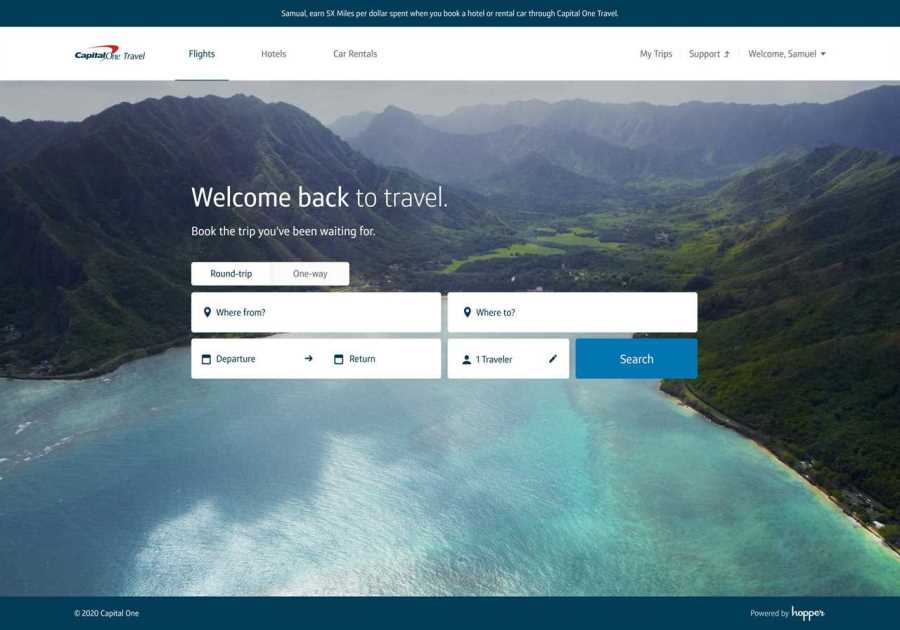HOSTED BY: 1 AIR TRAVEL
Editor’s note: This is a recurring post, regularly updated with new information.
Whether you’re planning a cross-country road trip or just need a car to move between your hotel to a nearby national park, rental cars are a common part of vacations. When it’s time to pick up your car, the rental agency will prevent a variety of options for coverage — for an additional fee, of course.
Did you know that using the right credit card to pay for your rental can invoke thousands of dollars in protection without any additional fees?
Related: The best credit cards for rental car insurance
While planning for emergencies is never fun, Chase Sapphire car rental insurance can cover things like theft, accidents or other damages to your rental car. This benefit is provided by two cards: the Chase Sapphire Reserve and Chase Sapphire Preferred Card. While we tend to focus on earning points and redeeming them for memorable holidays, it’s also important to understand how to protect your family in case something goes wrong on your next holiday.
Here’s a closer look at the Chase Sapphire cards and their rental car insurance benefits that can provide peace of mind the next time you hit the road in a rental car.
In This Post
Chase Sapphire Reserve rental car insurance
When paying for your rental car with the Sapphire Reserve, you can decline the rental company’s collision damage waiver (sometimes abbreviated CDW or LDW) and still be covered for up to $75,000 of theft or collision damages to your rental car.
This benefit provides primary rental car insurance and also covers fees the rental car company may assess, such as loss-of-use charges, administrative fees and even towing charges to get the car to a repair shop.
Related: 4 things to do once you get your Chase Sapphire Reserve
YELLOW DOG PRODUCTIONS/GETTY IMAGES
It’s important to note that there are restrictions to this benefit. For instance, it doesn’t provide other types of insurance, such as medical or liability protection, and it doesn’t cover car rentals that last more than 31 days. However, it does cover additional drivers listed on the rental contract and works in most countries around the world.
Types of cars are not covered by this benefit, however, include but are not limited to:
Antique cars.Cargo vans, trucks, vehicles with open cargo beds and vans with seating for more than nine people.Motorcycles and mopeds.Limousines.Coverage also doesn’t apply to off-road driving off road or if you’re doing anything illegal at the time damage occurs.
Related: Chase Sapphire Reserve credit card review
For more details, you can consult the full benefits guide here.
Chase Sapphire Preferred rental car insurance
Unlike coverage on the Sapphire Reserve, the benefits guide for the Sapphire Preferred does not list a specific dollar amount for maximum coverage. Instead, it says that coverage is provided “up to the actual cash value of most rented cars.”
This benefit provides primary rental car coverage against theft, damage and fees charged by the rental car agency and is available when you pay for your rental with this card and then waive the damage coverage offered by the rental agency.
Related: Who should (and shouldn’t) get the Chase Sapphire Preferred?

SOUTH_AGENCY/GETTY IMAGES
This coverage is subject to the same limitations as that offered by the Sapphire Reserve (mentioned above), including vehicle types, not providing other insurance types and only covering rentals of 31 days or less.
Related: Chase Sapphire Preferred credit card review
For more details, you can consult the full benefits guide here.
How to get Chase rental car insurance coverage
To be covered by Chase Sapphire car rental insurance, you must pay for the rental car with your card (or with points from your card, if booking through the Chase travel portal) and then decline the rental car company’s damage protection benefit when you pick up your rental car. If you choose to add damage protection from the rental car company, your credit card’s damage protection benefits (LDW or CDW) will not go into effect.
It’s worth noting that you still can add other protection benefits to your rental — such as liability insurance, roadside dispatch or other benefits offered by the rental car company — without losing the rental car damage protections from your Chase Sapphire card. Additionally, as always, you still should inspect your car before leaving the rental lot and when returning the car — including taking a video of the car’s condition and noting any existing damages.
Related: The 1-minute video you should take every time you rent a car
How to file a claim
If you have an accident or your rental car is stolen, your first step should be to notify the rental car agency and also notify the police in the event of theft. Your next steps will include filing a claim with your credit card’s benefits administrator.
For Chase Sapphire rental car insurance, there are two important dates to know. First, you must file your initial claim within 100 days of the incident. Second, your claim form must be postmarked within 120 days of the incident, even if you are still gathering other documents. Alternatively, you can submit your claim form online at eclaimsline.com by the same 120-day deadline.
Related: Chase Sapphire Preferred vs. Chase Sapphire Reserve insurance benefits – Which is better?

THE POINTS GUY
You will need to submit the following documents:
The accident report form.Your rental agreement(s).A repair estimate and itemized repair bill.Photographs of the vehicle damage.The police report, if one was made.A copy of the rental car agency’s demand later stating the costs you are responsible for and any amounts paid on the claim so far.Credit card billing statement showing the charges for the rental.It’s possible that your claim’s administrator may ask for additional documents, depending on your situation. Thus, you should keep copies of everything related to your accident or vehicle theft until the claim is resolved.
Related: Chase Sapphire showdown: Sapphire Preferred vs. Sapphire Reserve
What is primary car rental coverage?
We’ve mentioned several times that Chase Sapphire rental car insurance provides primary coverage. But what does that mean?
Rental car companies typically offer additional insurance benefits for a fee, often referred to as “Collision Damage Waiver” or CDW. Fortunately, many popular credit cards offer car rental coverage and thus allow you to decline this added fee but still enjoy protection on the car. However, the vast majority of these policies give you secondary coverage. As the name indicates, this would kick in on a secondary basis after other applicable insurance policies apply (namely your own personal car insurance) in the event of damage or loss to your rental car.
Primary coverage is the opposite. It kicks in first in case of a covered incident, like an accident or theft. This prevents you from needing to submit the claim to your personal insurance company — which may cause your rates to go up.
Bear in mind that this benefit only provides coverage for the car; it doesn’t include liability insurance for damage you cause to property, nor will it cover injuries to you or others involved in an accident.

MONKEYBUSINESSIMAGES/GETTY IMAGES
Bottom Line
Travel rewards credit cards can provide many benefits, such as helping you book first-class flights or luxury hotels using points when you might not be able to afford the cash prices for these travel experiences. However, travel credit cards also provide less-flashy benefits that can protect your trips during delays or when you have problems with a rental car.
The Chase Sapphire Preferred car rental insurance can cover the cost of your vehicle, and it costs just $95 per year to keep this card in your wallet. The Chase Sapphire Reserve provides top-notch coverage for rental cars and also provides $300 in annual travel credits plus airport lounge access; the card’s annual fee is $550.
Paying for your next rental car with either of these cards can provide peace of mind and can save you and your loved ones tens of thousands of dollars should you experience problems during your vacation.
Additional reporting by Ethan Steinberg.
Title: Chase Sapphire rental car insurance: What it covers and how to file a claim
Sourced From: thepointsguy.com/guide/chase-sapphire-preferred-rental-car-insurance/
Published Date: Wed, 18 Jan 2023 18:30:05 +0000






